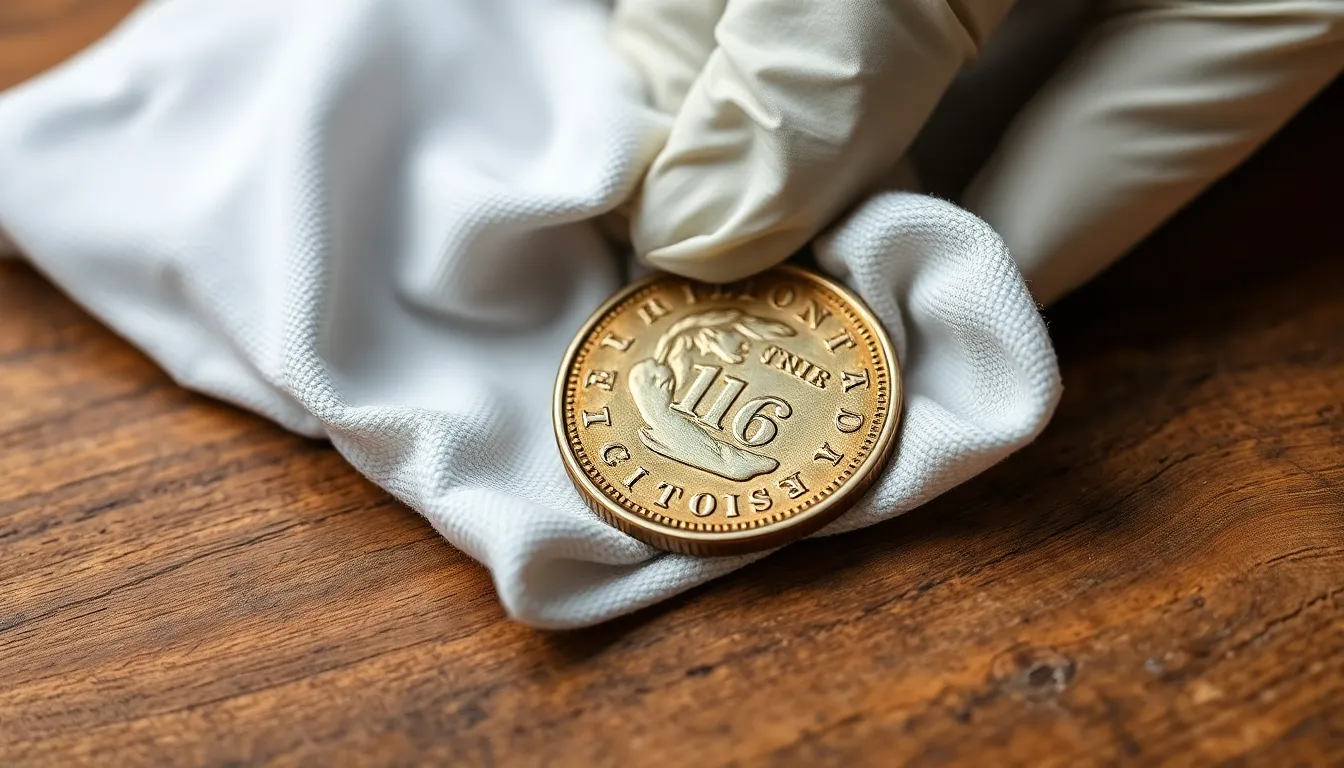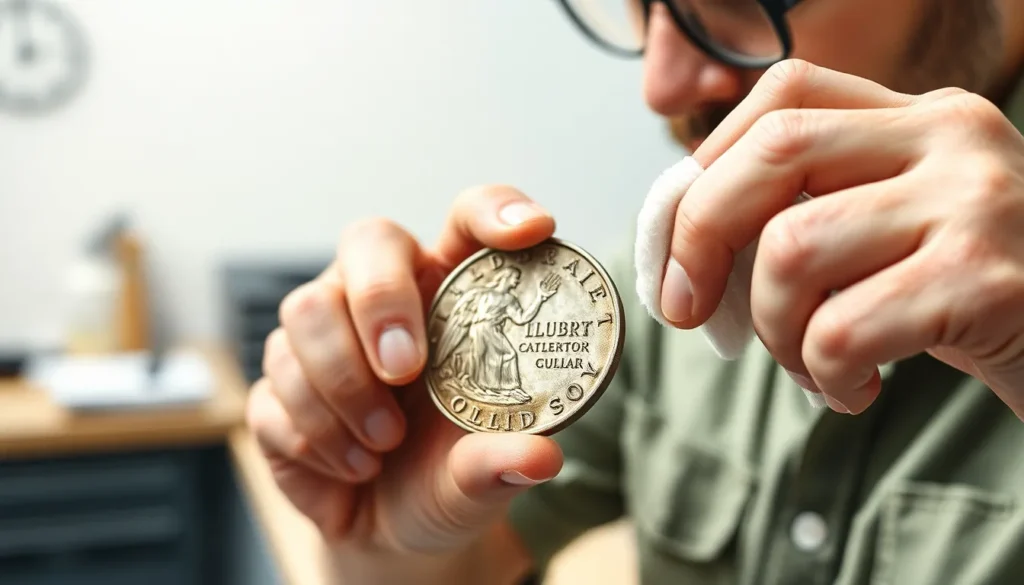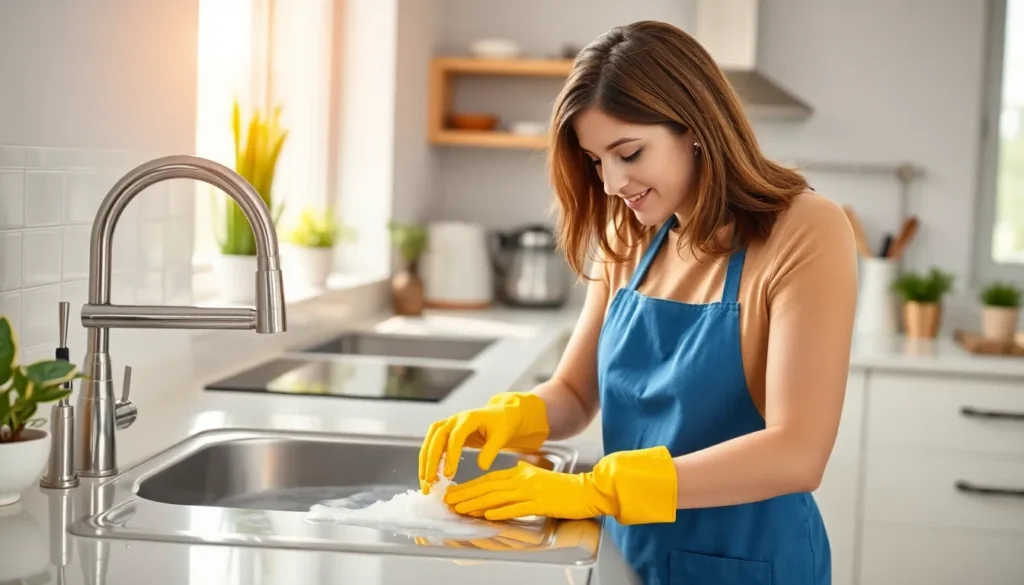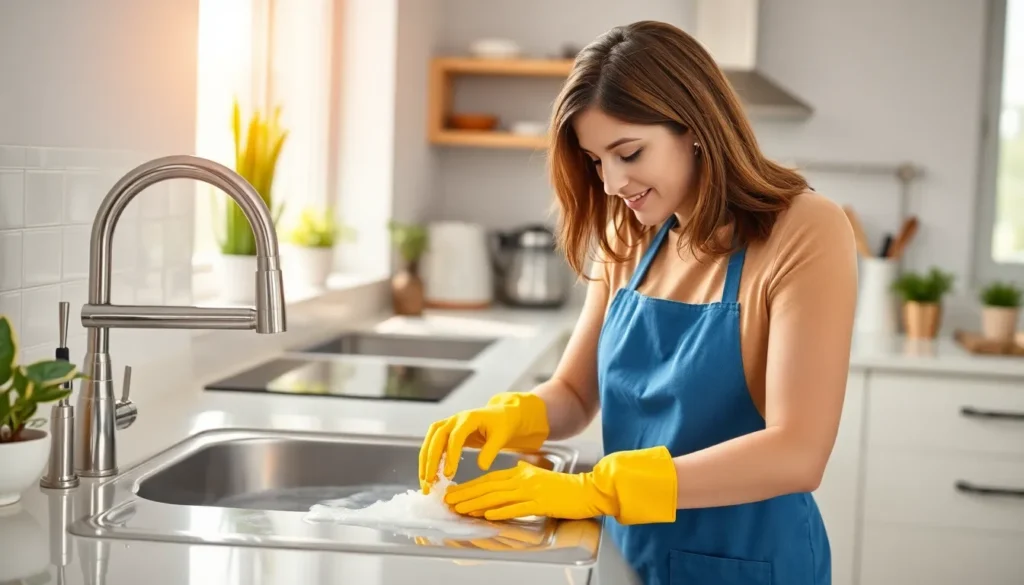Table of Contents
ToggleCoins can tell stories of history and culture, but let’s face it—no one wants to hear those tales from a dirty, tarnished surface. Enter the world of coin cleaning solutions, where magic happens and grunge meets its match. Whether you’re a seasoned collector or just someone who stumbled upon a treasure trove of change, the right cleaning solution can transform your coins from drab to fab in no time.
Understanding Coin Cleaning Solutions
Coin cleaning solutions play a vital role in the upkeep of coins by removing dirt and tarnish. These solutions are essential for collectors and enthusiasts seeking to maintain the aesthetic value of their collections.
Types of Coin Cleaning Solutions
Numerous types of coin cleaning solutions exist. Chemical solutions include acids, which effectively dissolve corrosion, and gentle detergents designed to clean without causing damage. Commercial cleaning products often contain specific formulas targeting tarnish removal. Homemade methods, such as using vinegar or baking soda, offer alternative solutions for those preferring a DIY approach. Each type has unique applications based on the coin’s condition and material.
Common Ingredients in Coin Cleaning Solutions
Typical ingredients in coin cleaning solutions reveal their effectiveness. Acetic acid from vinegar acts as a mild cleaning agent. Sodium bicarbonate commonly found in baking soda serves as a gentle abrasive. Isopropyl alcohol helps to remove oils while leaving minimal residue. Citric acid appears in many commercial products, providing a natural cleaning option. Understanding these ingredients helps users select the appropriate solution for their specific coin cleaning needs.
When to Use Coin Cleaning Solutions

Using coin cleaning solutions enhances a coin’s appearance. Recognizing when to apply these solutions ensures optimal results.
Signs That Your Coins Need Cleaning
Dirt and grime on the surface indicate a need for cleaning. Visible tarnish or discoloration suggests underlying corrosion may exist. Collectors should check for a dull finish, which diminishes the coin’s shine. An accumulation of foreign substances can obscure its details, negatively affecting value. If their coins display any of these signs, collectors should consider cleaning them.
Risks of Using Coin Cleaning Solutions
Using coin cleaning solutions carries specific risks. Scratches can occur if abrasive materials or overly harsh chemicals are employed. Chemical reactions might damage the coin’s metal composition, leading to irreversible changes. Some solutions may remove patina, which increases a coin’s aesthetic and market value. The incorrect application of these solutions often results in diminished visual appeal and potential financial loss. Understanding these risks helps collectors make informed decisions.
How to Use Coin Cleaning Solutions Safely
Using coin cleaning solutions requires caution to prevent damage to coins. Awareness of the cleaning process and its implications helps maintain the value of a collection.
Step-by-Step Guide for Cleaning Coins
- Select a cleaning solution based on the coin’s material and issues, such as dirt or tarnish.
- Prepare the coins by rinsing them gently in distilled water.
- Soak the coins in the chosen cleaning solution for a specified period, typically no longer than a few minutes.
- Remove the coins and rinse them thoroughly under distilled water to eliminate any cleaning solution residue.
- Dry the coins carefully using a soft cloth or air dry them, ensuring no water spots remain.
Best Practices for Coin Preservation
- Store coins in acid-free holders to prevent reactions that could cause damage.
- Handle coins by the edges to minimize fingerprints and oils from skin.
- Keep coins in a stable environment, avoiding extremes in temperature and humidity.
- Regularly inspect coins for signs of tarnish or dirt, addressing issues promptly but cautiously.
- Avoid harsher materials like strong acids or abrasive pads during cleaning, as these can alter the coin’s surface irreparably.
Alternatives to Chemical Coin Cleaning Solutions
Several methods exist to clean coins without relying on chemical solutions. Natural cleaning methods emphasize gentle solutions that reduce risk to coin integrity.
Natural Cleaning Methods
Vinegar and salt serve as effective alternatives for cleaning coins. Soaking coins in a mixture of these ingredients for a short duration loosens dirt and grime. Baking soda mixed with water creates a paste that can remove tarnish when applied with a soft cloth. Mild soap diluted in warm water offers another gentle option. After cleaning, rinsing coins in distilled water preserves their finish. These methods often appeal to collectors seeking safer cleaning options.
Professional Coin Cleaning Services
Enlisting the help of professional coin cleaning services ensures the preservation of a coin’s value. Experts use specialized equipment and techniques to clean coins without causing damage. Many services offer assessments, identifying the best cleaning approach based on the coin’s material and condition. Typically, they employ non-abrasive methods that retain the coin’s patina, enhancing its appearance without detracting from its history. Choosing a professional service can result in a more thorough cleaning while safeguarding the coin’s value.
Choosing the right coin cleaning solution is essential for maintaining the beauty and value of coins. Whether opting for chemical solutions or natural methods collectors must approach the cleaning process with care. Understanding the risks involved and recognizing when a coin needs attention can help preserve its integrity.
Following best practices and considering professional services can further enhance the cleaning experience. With the right knowledge and tools collectors can ensure their coins remain in excellent condition for years to come. By prioritizing proper cleaning techniques and storage methods they can protect their investments while enjoying the aesthetic appeal of their collections.




